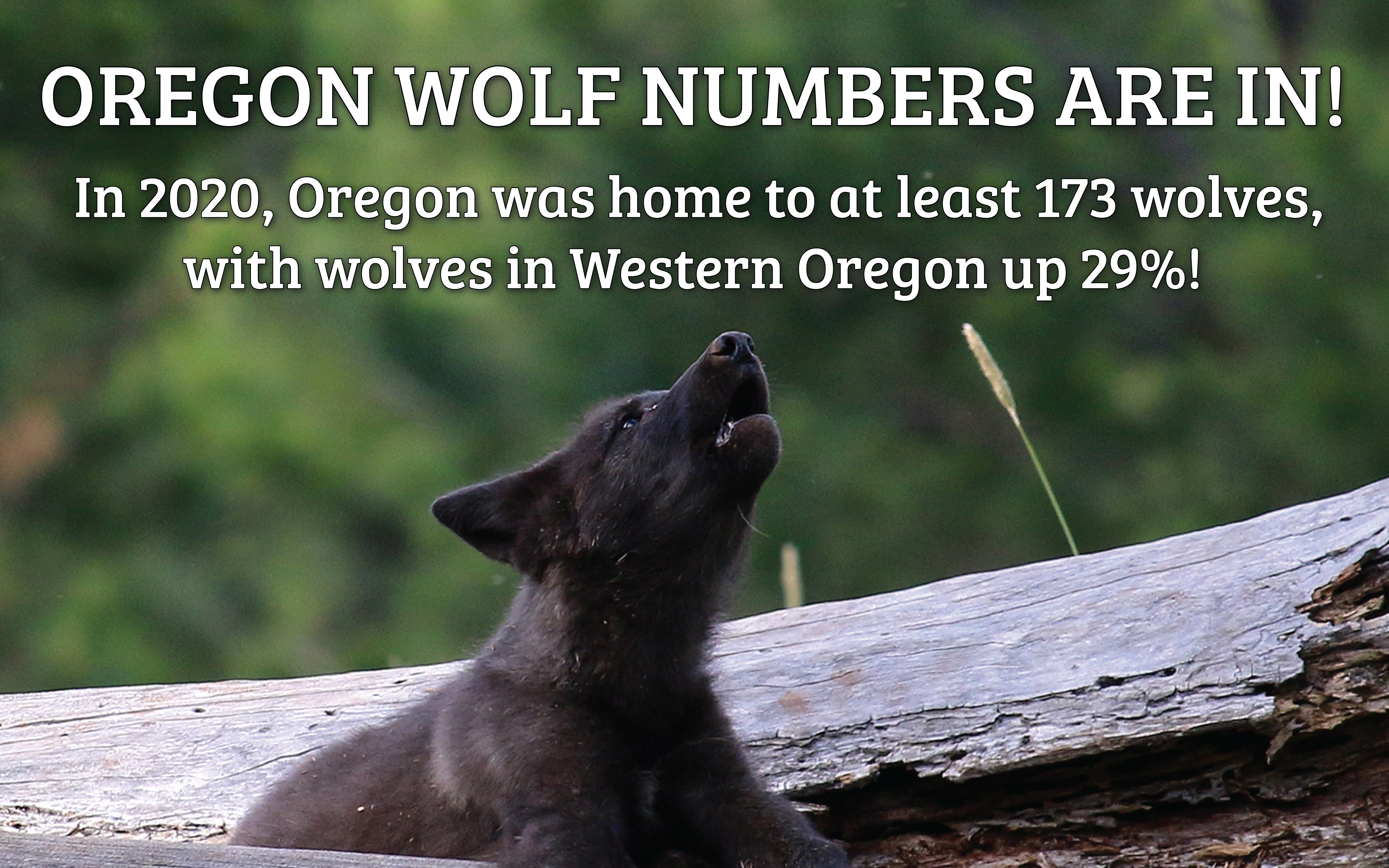FOR IMMEDIATE RELEASE
April 21, 2021
Contact:
Bethany Cotton, Conservation Director Cascadia Wildlands; email, 503.327.4923
Oregon’s Recovering Gray Wolf Population Grows, Expands Westward
Good News Tempered by 2020 Premature Removal of Federal Protections
Eugene, OR — Today, gray wolf advocates are celebrating the positive trends for wolves in Oregon in 2020. The Oregon Department of Fish and Wildlife’s (ODFW) annual state wolf report shows Oregon’s wolf population increased by 9.5% to a minimum count of 173 wolves. While 22 packs were identified, just 17 met the criteria of breeding pairs (an adult female and adult male with at least two pups surviving to December 31st of their year of birth), two fewer than at the end of 2019. Seven additional small groups of two to three wolves were documented; these groups are not considered packs, as a pack is defined as four or more wolves traveling together in winter. Wolf activity was documented in 12 Oregon counties and 35 geographic areas.
“Coming on the heels of the premature removal of federal protections, the positive news for wolves in Oregon is a welcome bright spot for the imperiled species,” said Bethany Cotton, conservation director with Eugene-based Cascadia Wildlands. “We hope 2021 will see wolves returning to additional historic territories in Oregon, Washington and California as well as the reinstatement of still necessary federal protections.”
The ODFW annual report shows a 29% increase in the wolf population in western Oregon, with 13% of the state’s wolves present in the western management zone. Of the nine documented wolf mortalities, seven were human caused and four of those killings were illegal. Not included in the 2020 death toll are five wolves found dead in Baker County in February 2021. ODFW has yet to release results of the investigation into the cause of death.
Wolves dispersing from Oregon are also making inroads into their historic habitat in California. Since early February OR-93 — a male wolf fitted with a GPS collar from the White River pack near Oregon’s Mt. Hood — has traveled through at least 15 counties and was recently located in San Luis Obispo County, likely the first wolf to return to California’s Central Coast region in 100 years. California currently has one established wolf pack, the Lassen pack.
Cascadia Wildlands and other conservation organizations challenged the removal of federal protections in the waning days of the Trump administration. The stripping of federal protections was not grounded in science. While on the road to recovery, wolves still occupy less than ten percent of their historic habitat across the lower 48 states.
In the weeks after the removal of federal protections came into effect, Wisconsin moved forward with a hunt, despite widespread public opposition. The state set a quota of 119 wolves, but had woefully inadequate processes in place to enforce the quota and 218 wolves were killed. The Montana state government is considering several bills to expand wolf hunting and trapping, bills that would be signed by a Governor who was cited for illegally trapping and killing a wolf this winter.
“While we celebrate the largely good news for wolves in Oregon and the Pacific West, wolves are facing increasing threats in other areas including Wisconsin, Montana and Idaho,” said Cotton. “Wolves do not recognize arbitrary political boundaries like state lines, so it is critical that wolves retain federal protections grounded in sound science to help ensure recovery across their historic range.”
###
Cascadia Wildlands is a Eugene-based nonprofit working to defend and restore Cascadia’s wild ecosystems in the forests, in the courts, and in the streets.



